December 18-20: Vientiane–>Bangkok–>Delhi–>Agra
On December 18th, I boarded the comically short Lao National Railway, which is 3.5 km crossing the Friendship Bridge to Nong Khai, Thailand (a similar experience to riding the Princeton dinky), and began my journey to India. The next two weeks were an adventure, and a lesson in patience, in the world’s second-most populous nation. Contrast was perhaps the most prevalent theme, as almost any traveler in India would agree. Hopefully my anecdotes and photos can somewhat do justice to this incredible experience.
After a day of enjoying Western comforts, like English movie theaters, Christmas music, and public transportation, in Bangkok, I arrived in Delhi on a late night flight. I was met at the airport by two of my three traveling companions: Andrew, a fellow Princeton grad and PiA Singapore fellow (who went on the floating restaurant bike ride of death with me back in September), and Mark, a PiA Singapore fellow (whose version of the India story can be seen here). We almost missed each other, because in India you have to buy tickets to actually enter the airport if you’re not flying (which at first seemed absurd, but later made sense after witnessing the insanity at train stations), so I was searching for them in the lobby while they watched through the window in frustration. We rode into Delhi for a few nights sleep in our hotel in the Paharganj neighborhood, known as a run-down backpacker area. The streets at night were vacant except some meandering cows, and occasional piles of burning trash that people were gathered around for warmth. Delhi was cold, especially coming from southeast Asia, and considering that many buildings in India are barely insulated, if at all.
The next morning, we got to the train station before sunrise to go to Agra, in hopes of beating many of the afternoon Taj Mahal crowds. This train was only a few hours, but probably the nicest we would take, with some free breakfast snacks. Predictably, as soon as we stepped onto the train platform, we were surrounded by touts, as we would be for the rest of our time in Agra, who all wanted us to get into their cab or horsecart, buy their Taj Mahal postcards/keychains/statues, and everything else possible. Everywhere we walked in Agra, we were called out to or followed, or approached by salesmen, drivers, restaurant owners, begging children, “tour guides.” Everyone desperately wanted as much tourist money as possible, forcing us to coldly ignore and walk by as the only way not to get caught up in the sea of unwanted attention.
Our first stop was obvious: the Taj Mahal. And there is no way to describe the experience of seeing it in person except in cliched and predictable adjectives like stunning and breathtaking. The size and intricacy of detail give it a grandeur that is simply transfixing, and it’s impossible not to keep looking up and snapping the same picture over and over, hoping that just one will do it justice. We easily spent several hours walking all the way around the structure, studying it from every angle and enjoying the respite from the chaos of the streets outside the gates. We still weren’t totally inconspicuous, however. More than one group of Indian tourists (mostly young men), approached us and asked if we pose for a photo with them.
Also at the Taj Mahal, we met our fourth and final traveling companion, Lisa, a former PiA Singapore fellow, who was traveling in India before going back to the States. With the group intact, we proceeded to the Agra Fort, a Mugal fortress that contains what seems like a small village, containing interesting architecture and marble details. Perhaps what was most impressive to me about the fort though was that it overlooks the Taj Mahal allowing us to see the monument from above and behind, making it look entirely different and equally impressive. After the Fort, we checked out the “Baby Taj” (aka. Itmad-ud-Daula’s Tomb), which is a smaller, and more delicate and intricately carved than it’s large counterpart across the river.
After a thorough overdose of Mugal architecture, we enjoyed the final daylight hours with Indian food and Kingfisher beer (and literally the worst coffee I have ever tasted, actually unpalatable) on the rooftop of a restaurant overlooking the Taj Mahal so we could enjoy a final glimpse of it before leaving the city that night. After a hectic day of sightseeing in Agra, the small, hard, bunks on the overnight train were almost a relief. We would wake up in Varanasi.






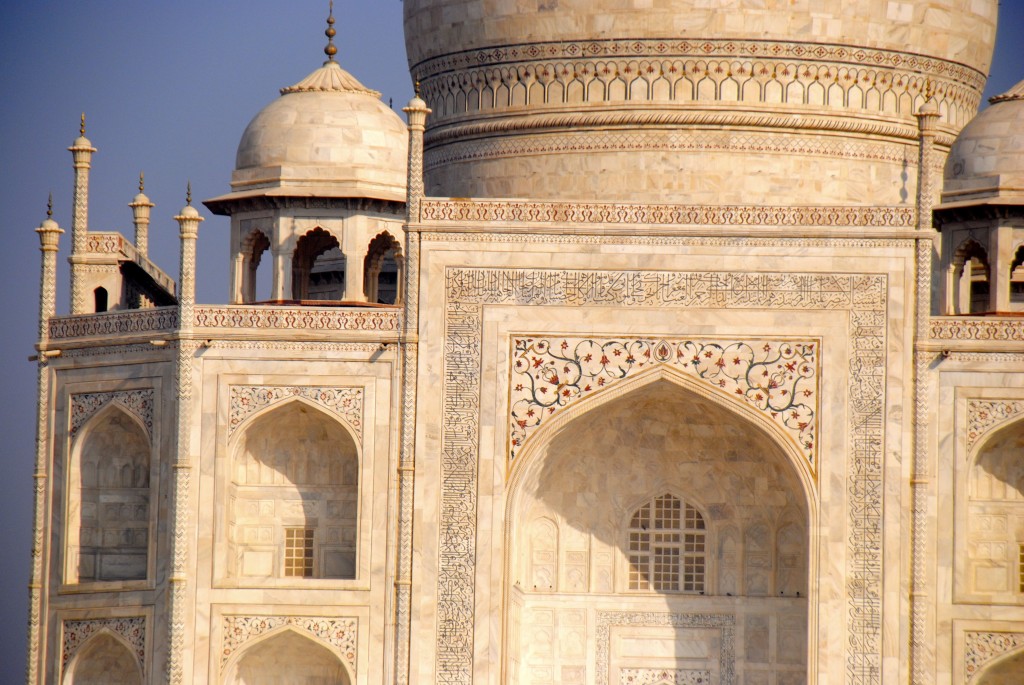
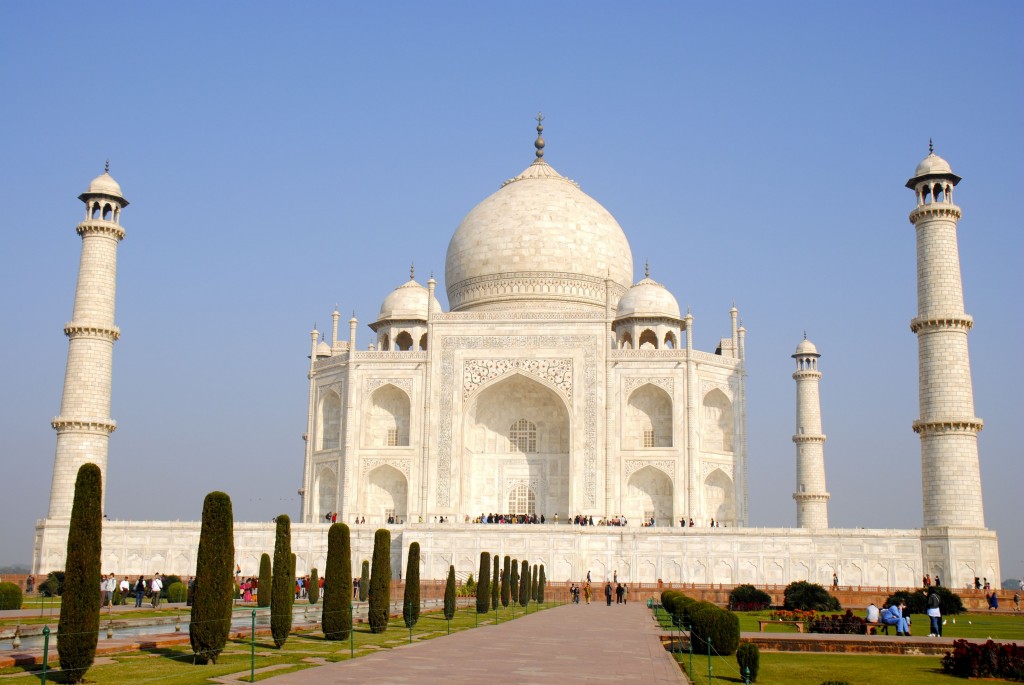
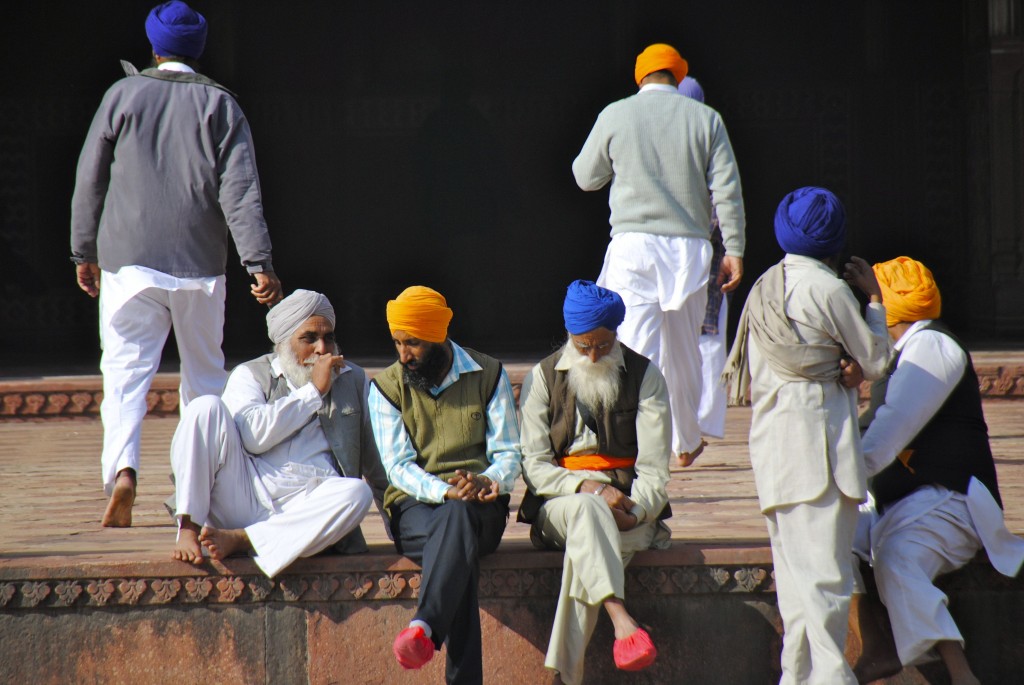
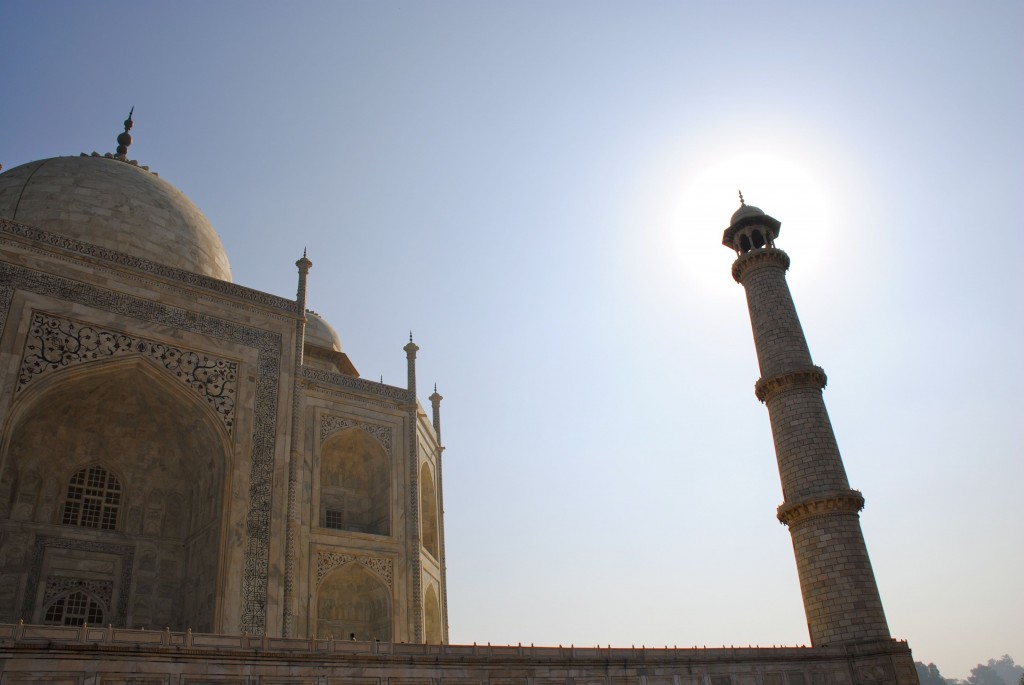
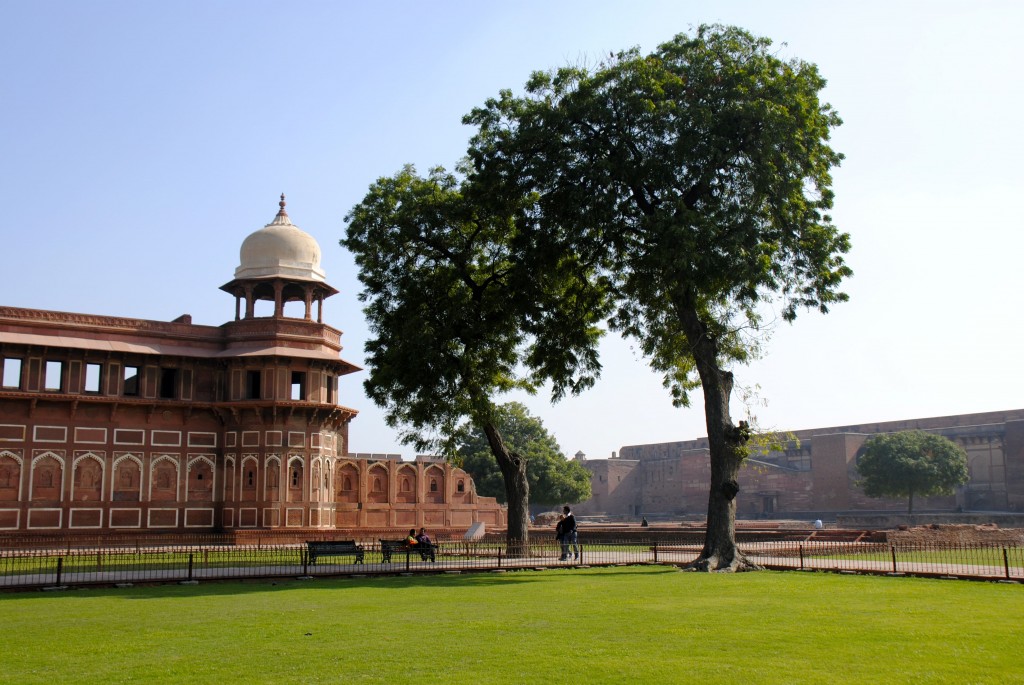
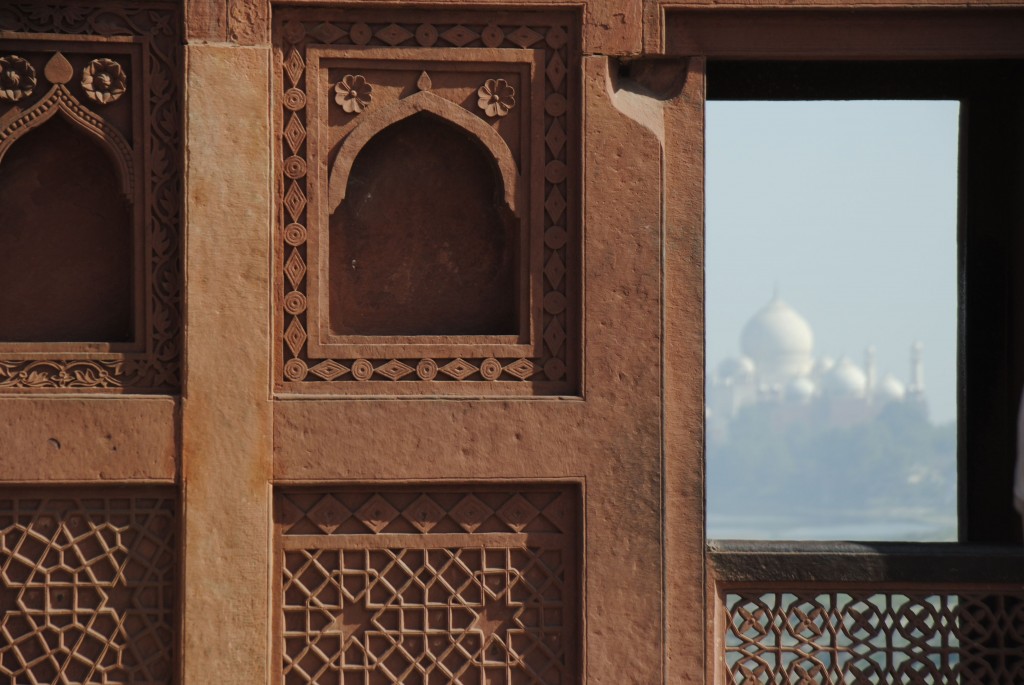
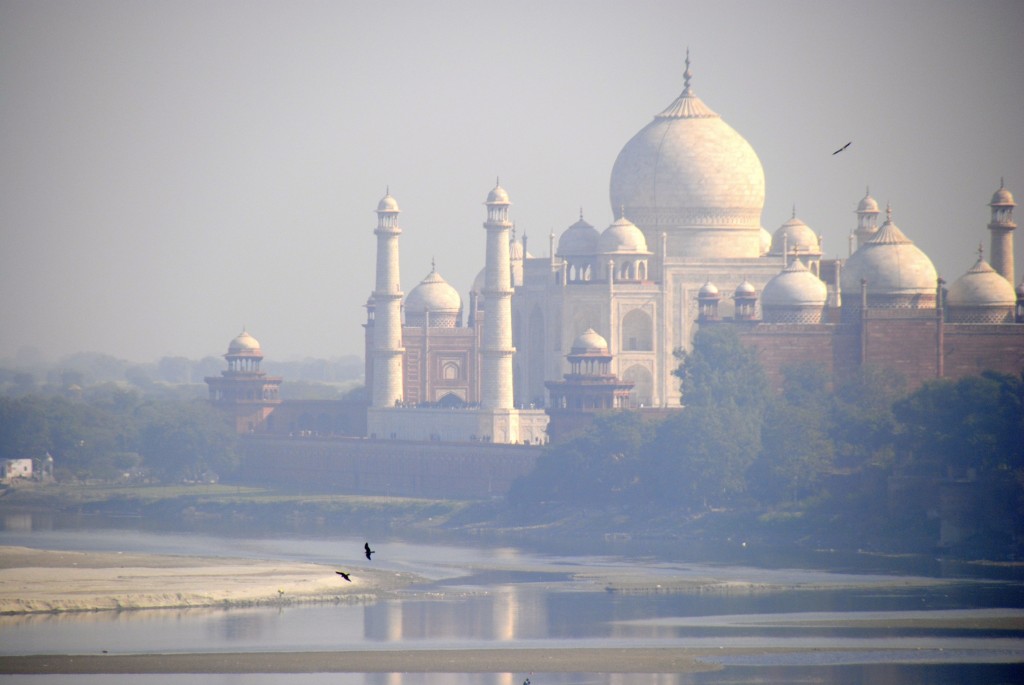
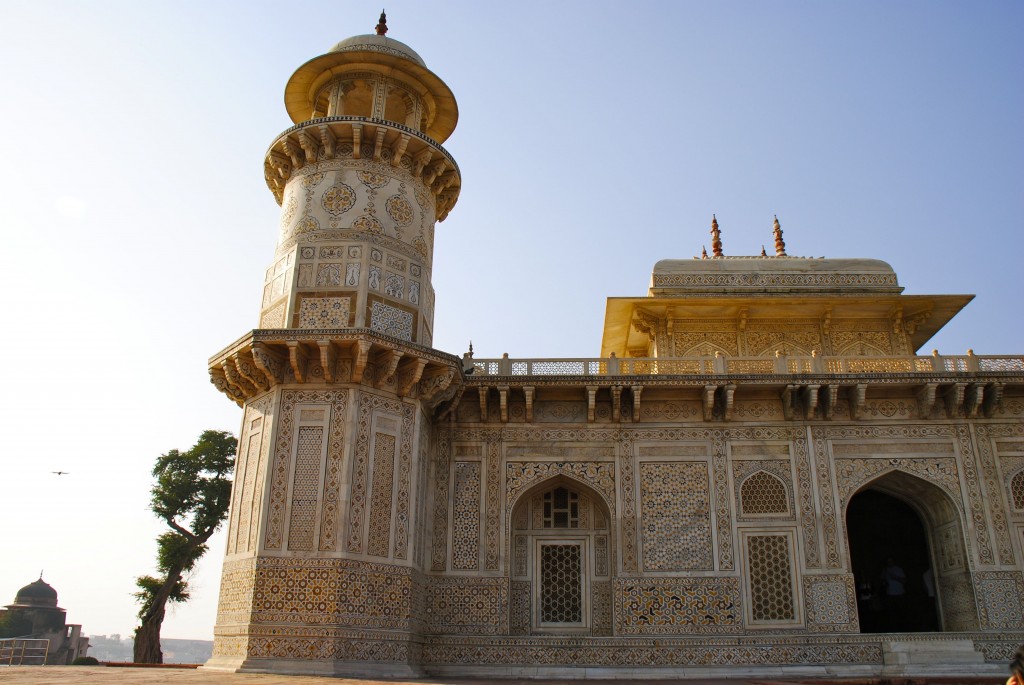
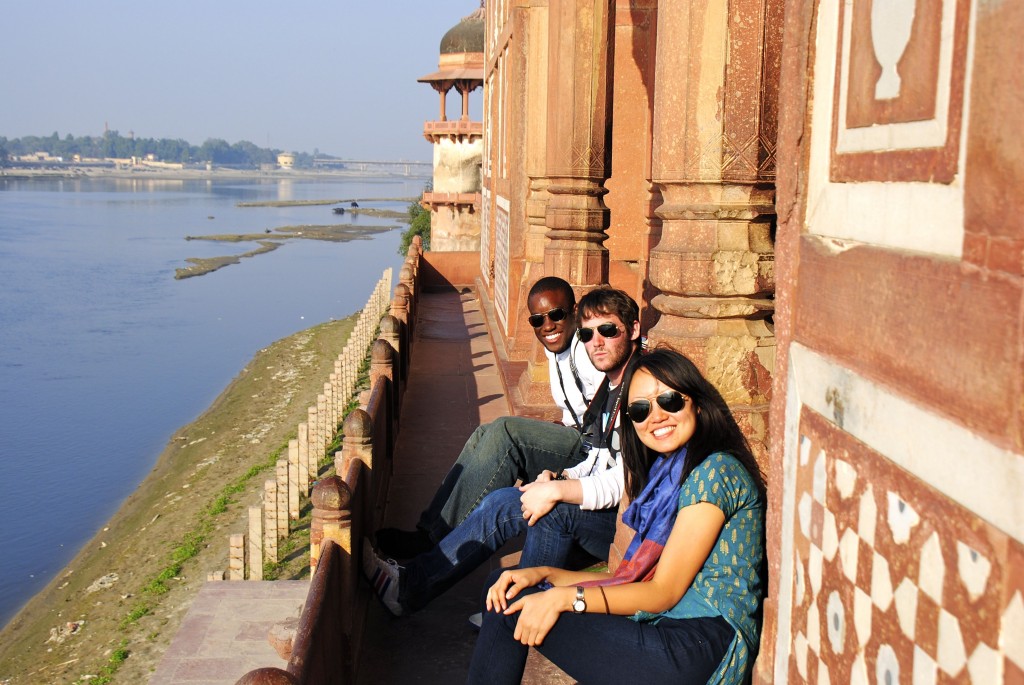
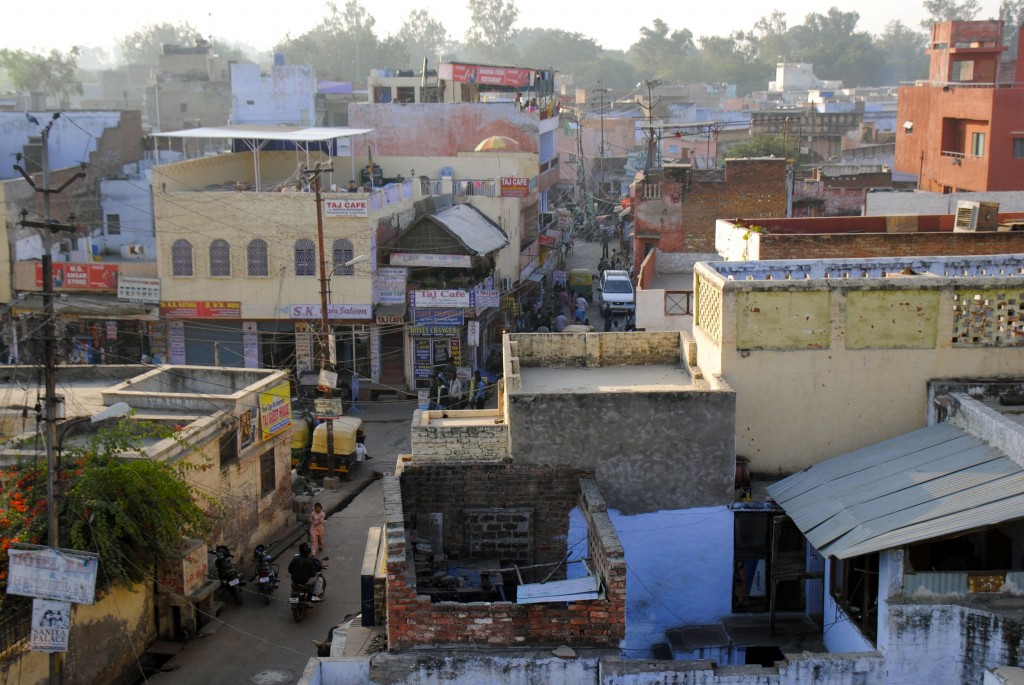
Pingback: I’ve Come from a Land Down Under | Somewhere Near Here.